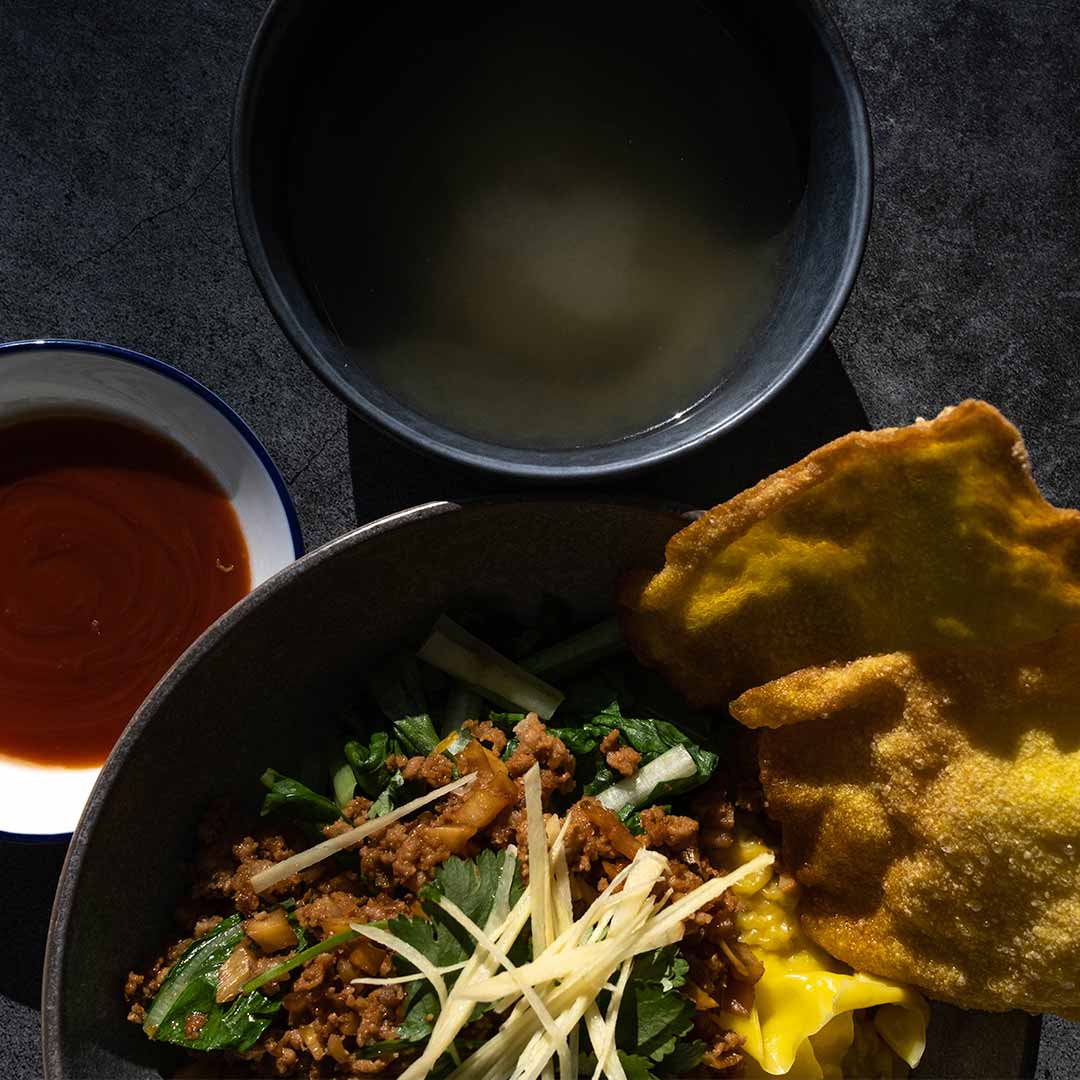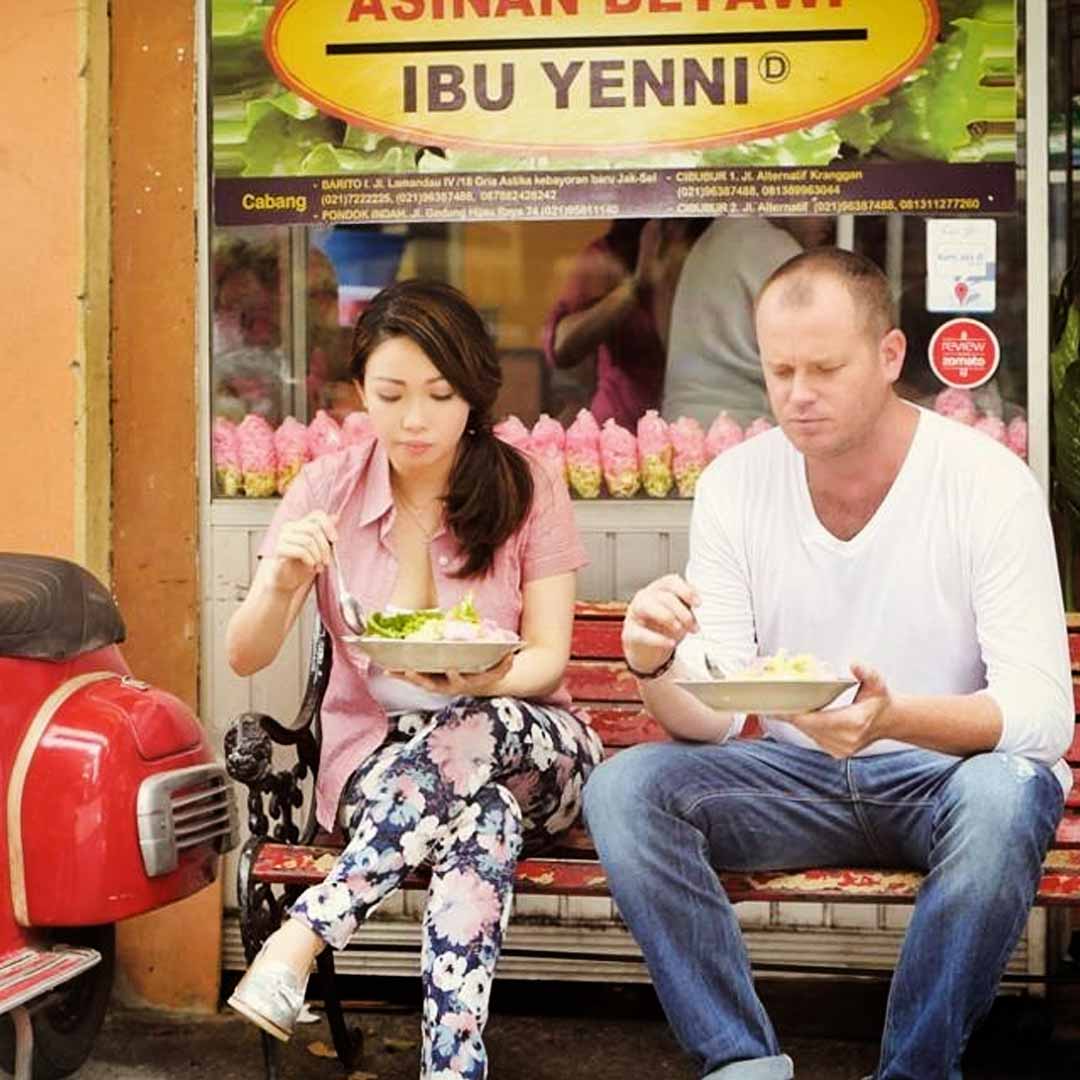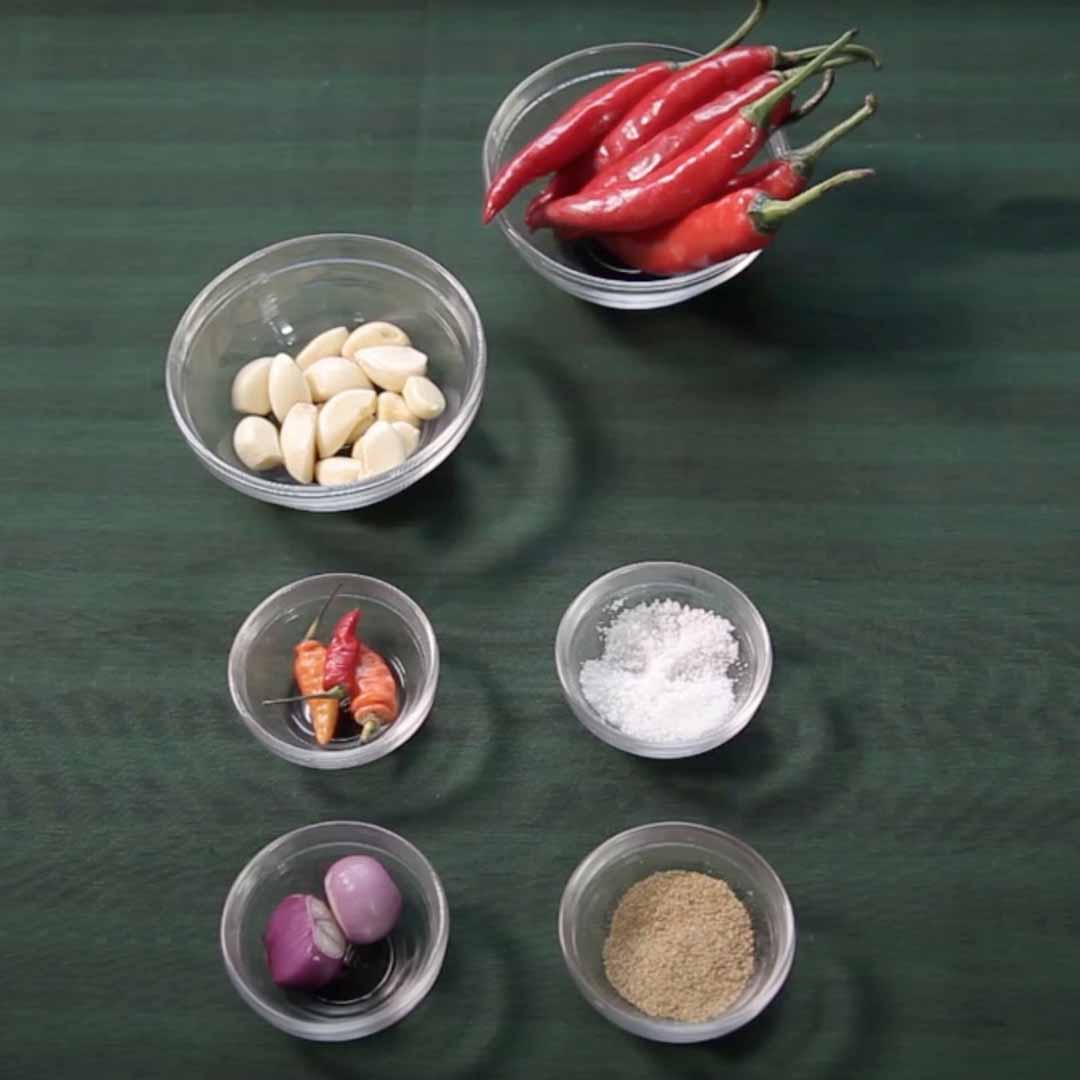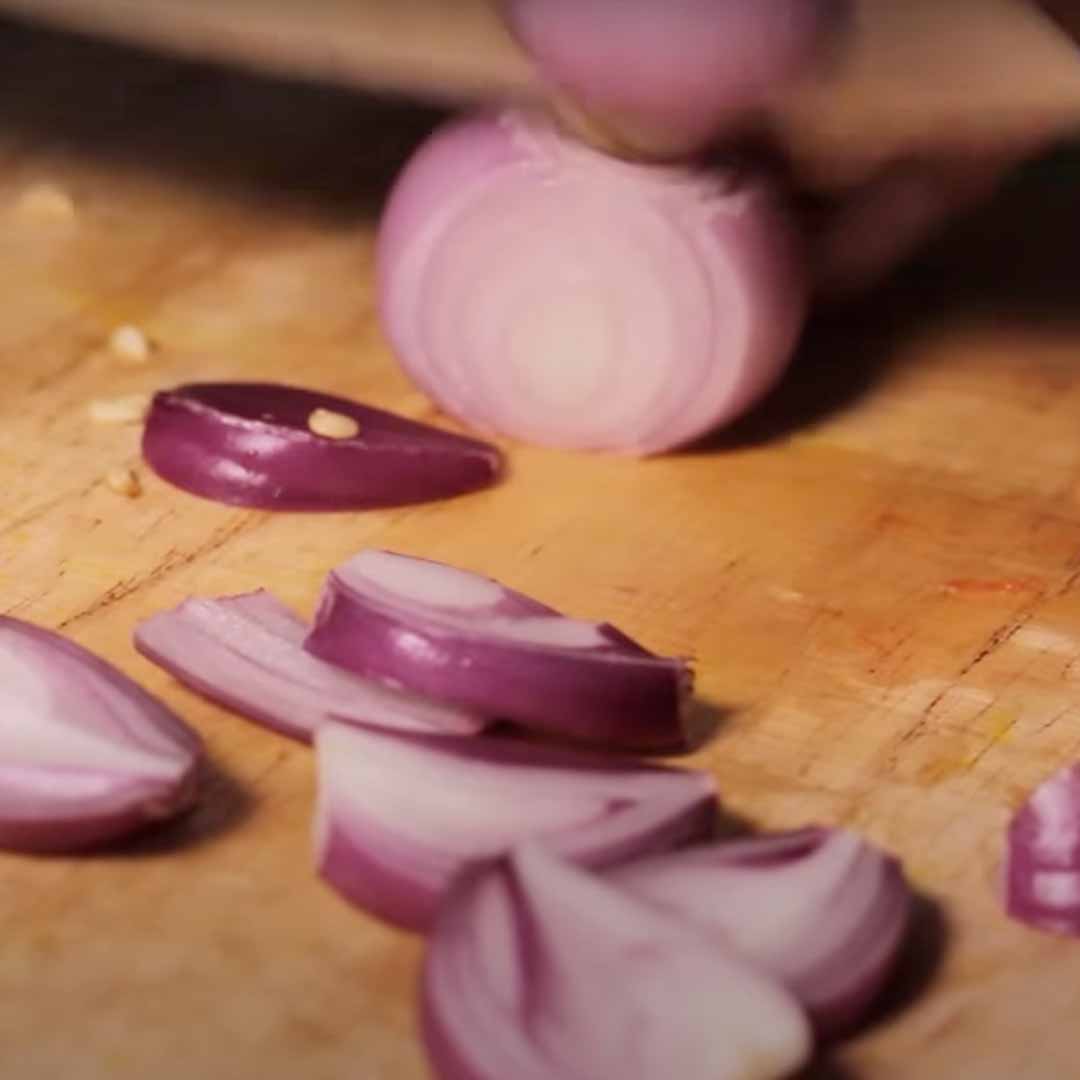
Recipe of the Chicken Mie Pangsit, an Indonesian food pillar
Chicken Mie Pangsit
A new cooking experience
We’re embracing technology while also acknowledging the world situation. So, I’ve been doing my best to set up my restaurant Monsoon remotely. Although I can’t be in Hong Kong personally, I’ve regularly liaised with Chef Budiana and the Monsoon team via video conferencing and working live online with Zoom. Then came an idea: to offer people a new experience of cooking from home. We start this new masterclass series with a pillar of the Indonesian food culture, derived from the traditional Chinese cooking techniques: the “mie ayam pangsit” (seasoned noodles served with diced chicken on top)portions
minutes
Summary
- chicken mince 60g
- dry egg noodles 90gr
- choy sum chopped 50gr
- chicken dumplings 4 pcs
- bamboo and water chestnuts diced 30gr
- garlic oil 1 tbsp
- dark soy 1 tea spoon
- light soy 1 tea spoon
- kecap manis (sweet soya sauce) 1 tea spoon
- chicken powder 1 tbsp
- sugar 1 pinch
- salt 1 pinch
- pepper 1 pinch
A variant from Malang, Java Indonesia
Chicken broth
- 2 Tablespoons of Chicken Powder per cup of water
- coriander root
- ginger
- white pepper
boil all ingredients together
drain the broth
reserve
Garnish
coriander leaf ginger julienned


































